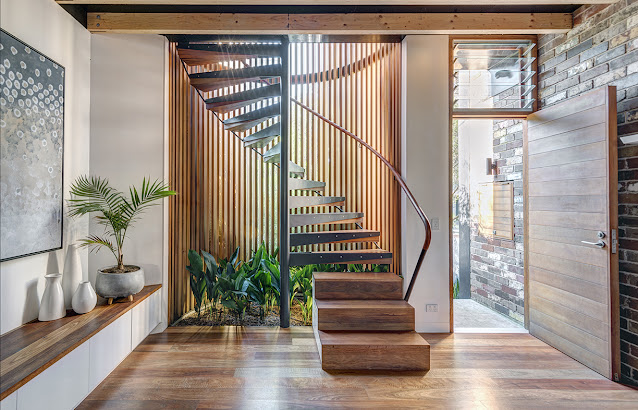Whether you are remodeling or designing a home, there are many different types of designer stairs in Sydney to choose from. Since your home's stairs are often a focal point and one of the first things you see upon entering, it makes sense to consider its design carefully.
Types of designer stairs in Sydney
Because stairs are a structural and design element, you'll likely consult with an architect when deciding which stairs to include in your renovation or construction project. Before that advice, it makes sense to familiarize yourself with the different options and styles of designer stairs in Sydney available. The architect can then make tips primarily based on the fashion of your home and your budget.
1. House stairs
A traditional house staircase is a straight set of designer stairs in Sydney with no change in direction. They are easy to design, build, carpet, and use and are the most common choice for stairs. They are additionally the best to make.
2. Double staircase
If many people flow through an area, such as a central hall during a party or the entrance of a large house, it can be beneficial to have a double staircase. A double staircase is nothing more than two stairs in the same room that lead to the same location. They are usually symmetrical.
3. Spiral staircase
Although most designer stairs in Sydney are built using right angles, this is not the only option. A spiral staircase also referred to as a spiral, arch, or curved design, is often used to make an entryway more dramatic or aesthetically pleasing.
4. Floating staircase
This type of staircase is designed as if the stairs are floating in space without support. In fact, a strong steel beam provides the structural foundation of this staircase. Sometimes the beam is positioned in the middle of the steps, but extra regularly, it is embedded in the wall.
There are no risers to connect one thread to another and no stringers on the outside of the stairs. They are visually sleek and stunning. However, they can be cumbersome to walk and take special skills to design and install.
5. Switchback stairs
Switchback stairs have a minimum of two flights. The user climbs into the first flight, turns 180 degrees to land, then climbs into the second, parallel flight.
When installed in a private home instead of industrial stairs, they add architectural interest to the residence. They are slightly more complicated to construct than a straight staircase.
6. L-shaped staircase
Instead of the 180-degree turn of a switchback staircase, the L-shaped staircase has a 90-degree turn. The landing where the turn occurs may be located at the top, bottom, or middle of the stairs, depending on the desired visual effect and space limitations.
Based on the architect's intent, the L-shaped staircase can hug the corner of the room or descend in the middle of it.
Landings are large, flat areas that allow stair users to rest. Their frequency and minimum size are also dictated by building codes. A 'landing return' is a landing that connects two pieces of stairs that run in different directions.

Comments
Post a Comment